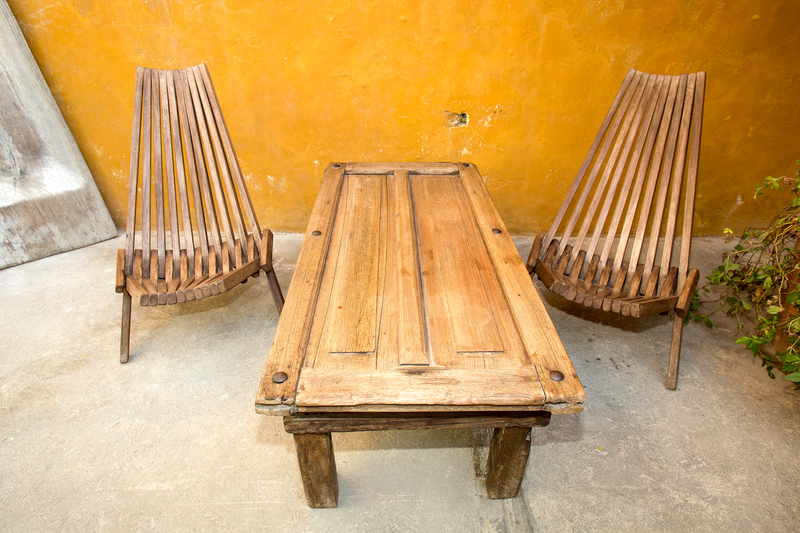Environmentally Safe Methods for Disposing of Pots and Pans
Looking to bid farewell to your old cookware safely? Many of us accumulate trays, pots, and pans until the kitchen cabinets are bursting at the seams. When it's time to let go, tossing cookware into the trash is not the best option for our planet. Thankfully, there are many eco-friendly methods for disposing of pots and pans that minimize environmental impact and support a healthy planet.

Why is Sustainable Cookware Disposal Important?
Traditional disposal of cookware, including pots and pans, in landfills can contribute to long-term environmental harm. Many cookware items contain metals, non-stick coatings, or plastics that don't break down easily, potentially leaching harmful substances into the soil and water. By prioritizing environmentally conscious ways to dispose of kitchenware, you can:
- Reduce landfill waste
- Conserve valuable resources through recycling and repurposing
- Support your community by donating usable items
- Encourage a sustainable lifestyle for future generations
1. Assess the Condition: Salvage, Donate, or Recycle?
Your first step is a condition check:
- Usable cookware: Still functional? Consider donating.
- Damaged or worn-out: Time for recycling or other disposal methods.
Can Your Pots and Pans Be Reused?
Before disposal, ask yourself: Can someone else benefit from your old pots and pans? If they're not warped, badly scratched, or missing handles, consider these options:
- Donate to thrift stores like Goodwill, Habitat for Humanity ReStore, or Salvation Army.
- Give to local charities, shelters, or food banks that welcome kitchen donations.
- Offer them to friends or through online platforms such as Freecycle, Facebook Marketplace, or Buy Nothing groups.
Donating extends the life of cookware, reduces demand for new goods, and helps the community--an environmentally responsible way to clear your clutter.
2. Metal Recycling: An Eco-Friendly Solution
Most cookware is made from various metals such as aluminum, stainless steel, or copper. Even when no longer usable for cooking, these materials can be recycled and repurposed for new products, supporting a circular economy.
How to Prepare Pots and Pans for Recycling
- Identify the material: Check if your pots and pans are primarily made from stainless steel, aluminum, or copper.
- Remove non-metal parts: Take off any plastic, wooden, or rubber handles, and lids with glass or composite materials.
- Separate non-stick or coated pans: Teflon or ceramic coatings may require special recycling processes.
Some municipal recycling programs accept metal cookware, but call first or check their website for details. Most often, you'll need to take pots and pans to a scrap metal facility, where they're weighed, sorted, and prepared for processing.
Special Considerations for Non-Stick Cookware
Can non-stick pans be recycled? Many modern non-stick pans have coatings like PTFE (Teflon), which aren't recyclable in curbside bins. Some scrap yards will accept them if you remove handles and note any coatings, but always check their policy first. Alternatively, look for cookware brands with take-back programs for their products--some offer mail-in recycling!
3. Repurpose: Creative Ways to Reuse Old Cookware
Repurposing is a fun, creative, and environmentally friendly way to prolong the life of pots and pans:
- Planters: Drill drainage holes in a pan's base and use it to grow herbs, flowers, or succulents.
- Storage containers: Deep pots serve as unique bins for tools, art supplies, or even pet food.
- Garden art: Paint and hang old pans as whimsical garden decorations or wind chimes.
- Bird bath: Upcycle a large pan into a shallow bird bath for your backyard.
- Wall organizers: Attach pans to walls in the garage or kitchen to hold utensils or crafts.
A bit of imagination can turn an old skillet into something useful and charming!
4. Take-Back Initiatives and Brand Recycling Programs
Many cookware manufacturers are now launching sustainable cookware disposal programs. Here are a few notable options:
- TerraCycle: Works with select brands for recycling difficult-to-recycle pots and pans.
- Calphalon: Offers a ReNew recycling initiative for their products--get a prepaid shipping label and send items directly to the recycler.
- GreenPan: Occasionally offers local collection or mail-back programs.
- Check your cookware's manufacturer: Visit their website or customer support--many are launching green disposal options.
These methods ensure metal and coatings are handled responsibly and keep materials circulating in the manufacturing chain.
5. Disposing of Cookware at Household Hazardous Waste Facilities
If your pots and pans contain hazardous materials (such as those with toxic non-stick coatings), your safest, most sustainable disposal route may be through household hazardous waste (HHW) collections. These facilities are specially equipped to safely process materials that cannot go in regular or recycling bins.
- Check your city's HHW schedule: These events are often annual or semiannual.
- Bring items with chemical coatings: Old Teflon, ceramic with metallic content, or burnt-on residue may qualify.
- Never incinerate: Burning such cookware can release toxic fumes--always use formal facilities.
Contact your local waste authority for guidance to ensure the most environmentally sound cookware disposal method.
6. Avoiding Common Pitfalls: What Not to Do
- Don't toss in curbside recycling bins unless guidelines allow: Most programs only accept standard metal cans--not pots, pans, or utensils.
- Don't burn or melt at home: Attempting to destroy cookware yourself can be dangerous and environmentally harmful.
- Don't dispose in general trash: Pots and pans can cause problems in landfill environments and won't decompose.
Research local rules to make sure your choice is truly environmentally responsible.
7. Tips for Reducing Future Waste: Choosing Sustainable Cookware
The best way to minimize the environmental toll of cookware disposal is by investing in sustainable, long-lasting pots and pans. Consider these strategies:
- Buy quality over quantity: Well-made cookware from reputable brands often lasts for decades.
- Opt for recyclable materials: Stainless steel and pure aluminum are more readily recyclable.
- Avoid PTFE and PFAS non-stick coatings: Choose ceramic or carbon steel alternatives.
- Look for eco-certifications: Some brands highlight their commitment to recyclability and low-impact manufacturing.
Taking these steps ensures you'll face fewer disposal dilemmas in the future.
Environmental Benefits of Responsible Pots and Pans Disposal
Properly disposing of your old kitchenware helps in several key ways:
- Lowers landfill use: Less durable waste means less environmental contamination and greenhouse emissions.
- Supports material recovery: Metals can be reused for new products, reducing the need for virgin mining and refining.
- Protects natural habitats: By avoiding hazardous waste dumps, water and wildlife stay safer.
- Builds community connections: Donations and swaps help those in need and foster sustainable habits.
Every environmentally safe pots and pans disposal method you choose sets a positive example and paves the way for a greener planet.

Frequently Asked Questions about Eco-Friendly Cookware Disposal
Can my city recycling program take old pans?
Most municipal programs do not take cookware through curbside recycling, but check with your local facility--some accept scrap metal at drop-off locations.
Are all metals in kitchenware recyclable?
Yes, but with caveats. Aluminum, stainless steel, and copper are widely accepted, but pans with coatings or composite layers may need special handling. Always separate metal from non-metal components if possible.
Is disposing of non-stick cookware safe for the environment?
If handled correctly, yes. Never place Teflon-coated or ceramic-coated pans in the trash--take them to a household hazardous waste provider or see if the brand offers recycling. This reduces risk of toxins entering the environment.
Can glass lids go with metal pans for recycling?
No; handle separately. Glass lids are usually made from toughened glass, which isn't recyclable with regular glass. Remove them and check for local glass recycling or donation options.
Are cast iron pans recyclable?
Absolutely. Cast iron is one of the most recyclable materials. However, due to its weight, it's best taken to a scrap metal yard. Alternatively, refurbishing is a popular and sustainable option.
Conclusion: Choose the Environmentally Safe Path for Pots and Pans Disposal
Throwing old pots and pans into the garbage may be convenient, but with so many ecological alternatives, it's just as easy to dispose of them in ways that honor the planet. Remember to:
- Donate, when possible, to extend kitchenware lifespan
- Recycle metals responsibly at the appropriate facility
- Repurpose creatively and get crafty at home
- Use take-back or brand recycling programs for trickier materials
- Handle hazardous coatings with care via HHW collection
These environmentally safe methods for disposing of pots and pans ensure that your kitchen upgrades are eco-conscious every step of the way. Your choices make a genuine difference--lead the way in sustainable living by embracing these thoughtful, planet-friendly disposal options for all your old cookware!
```